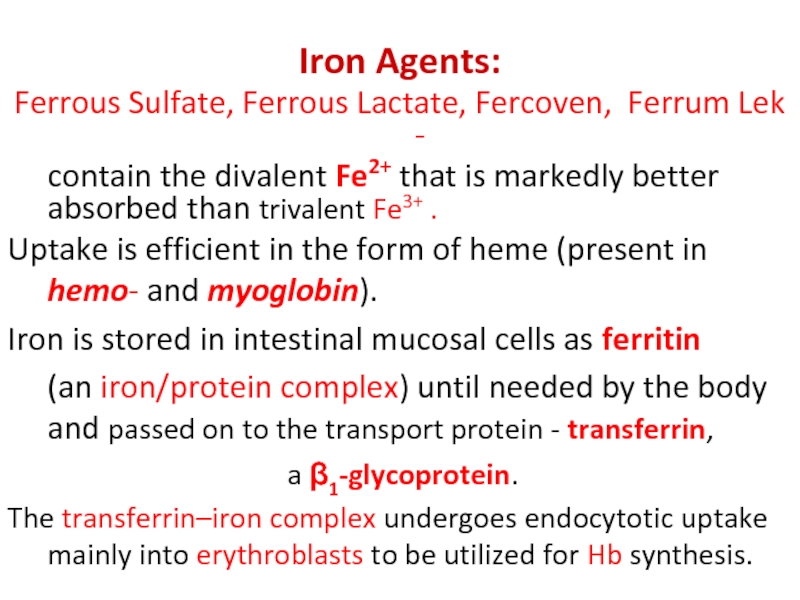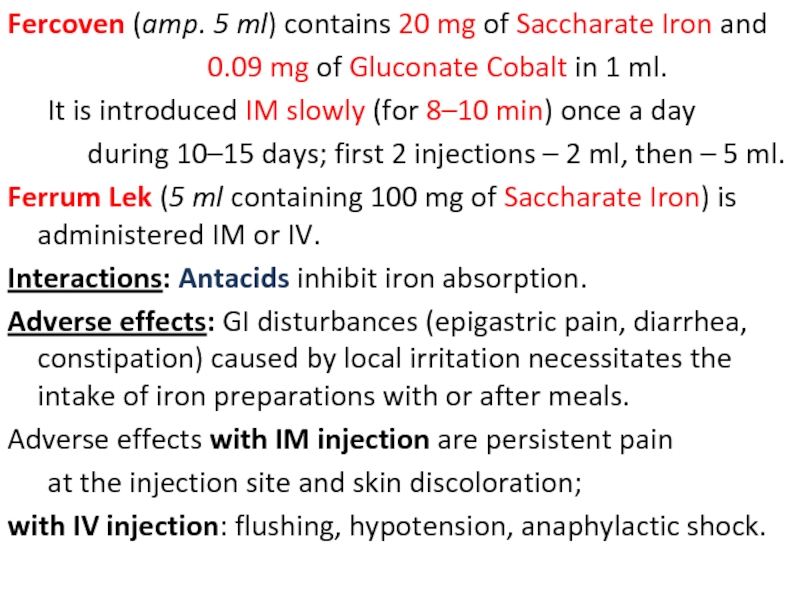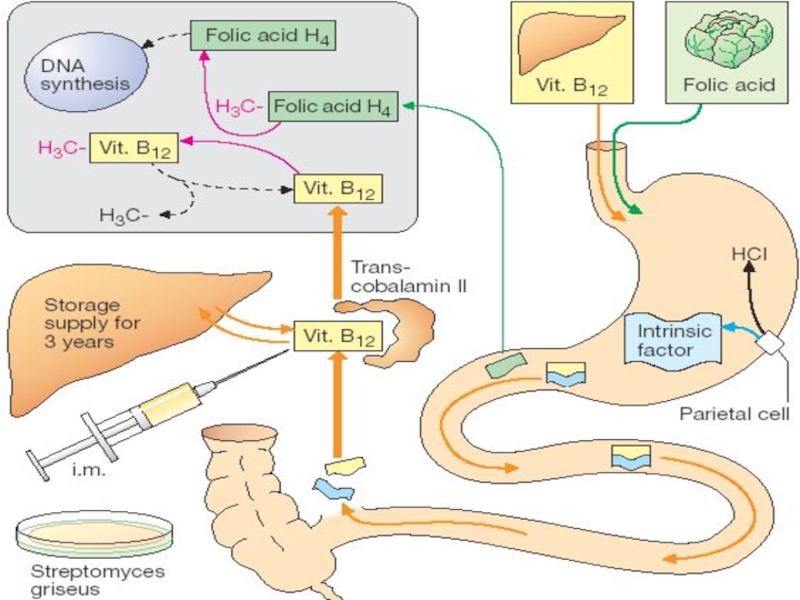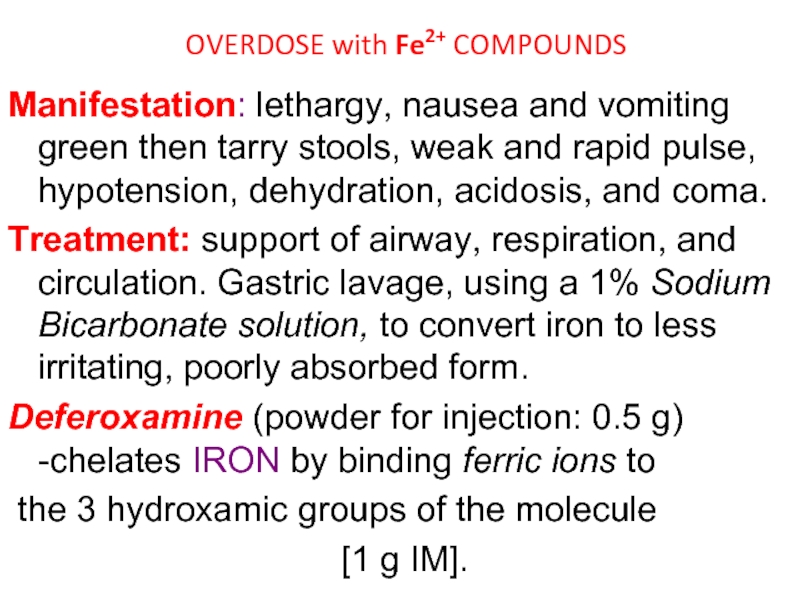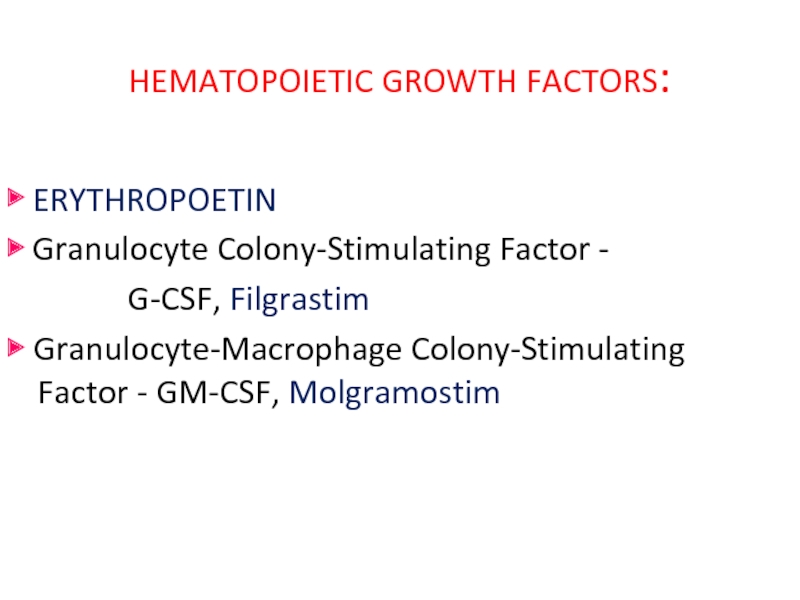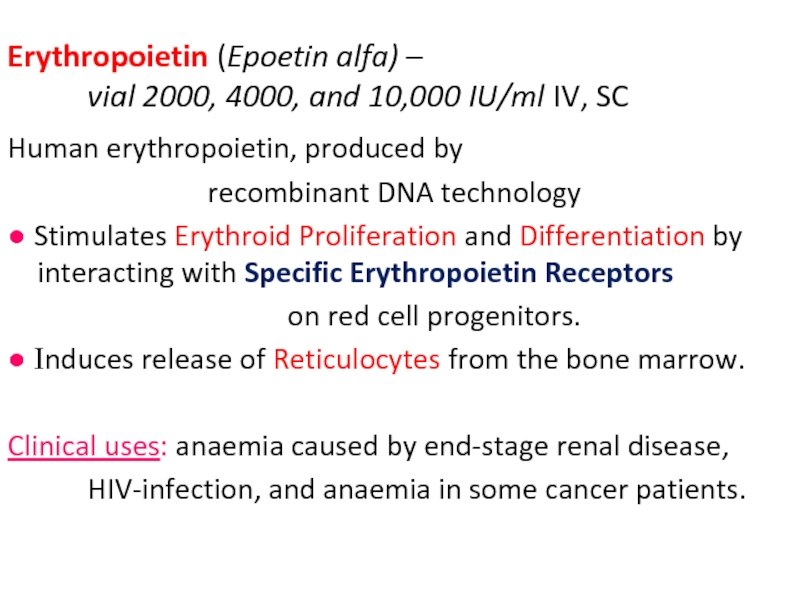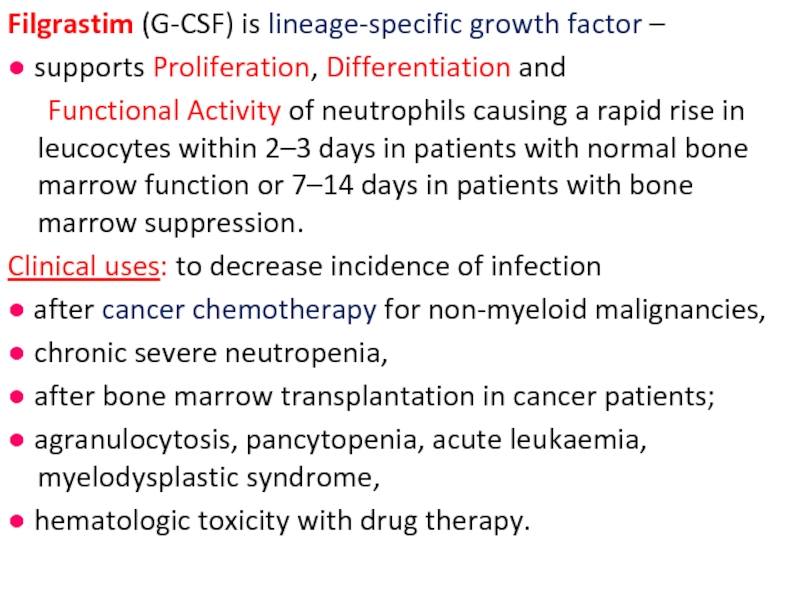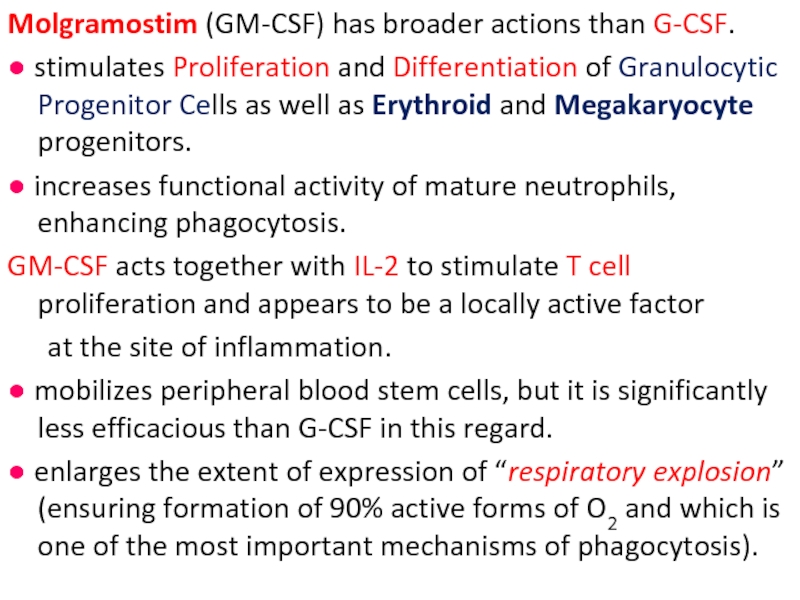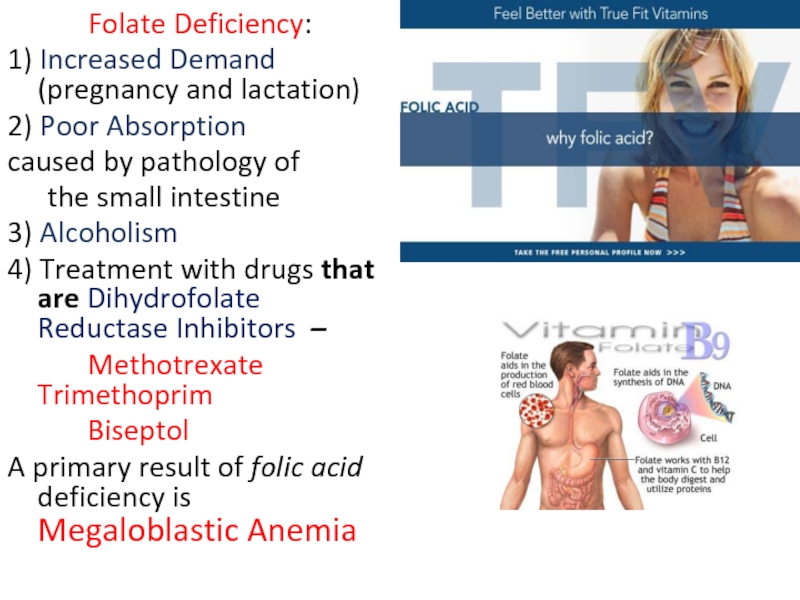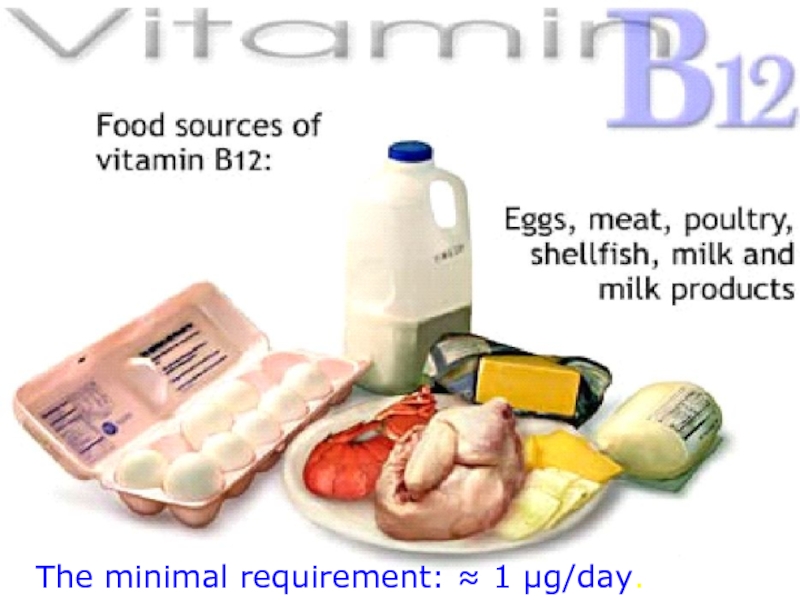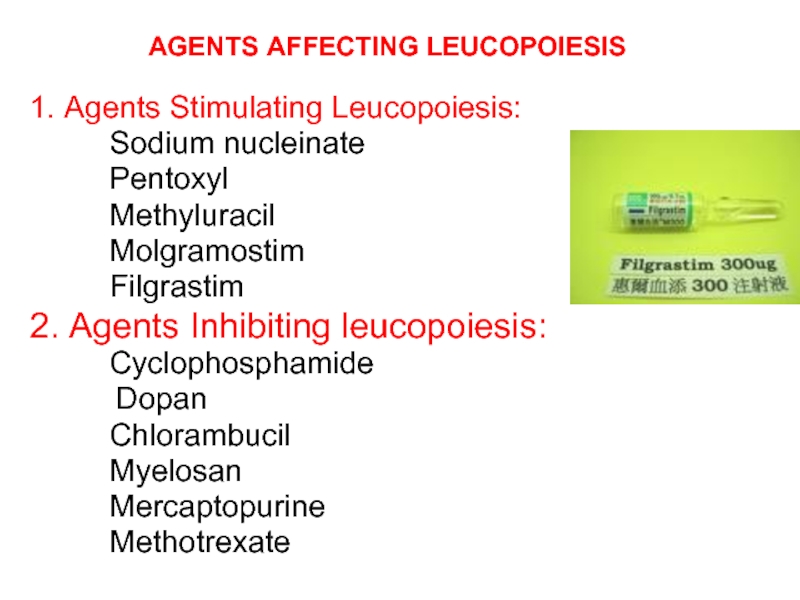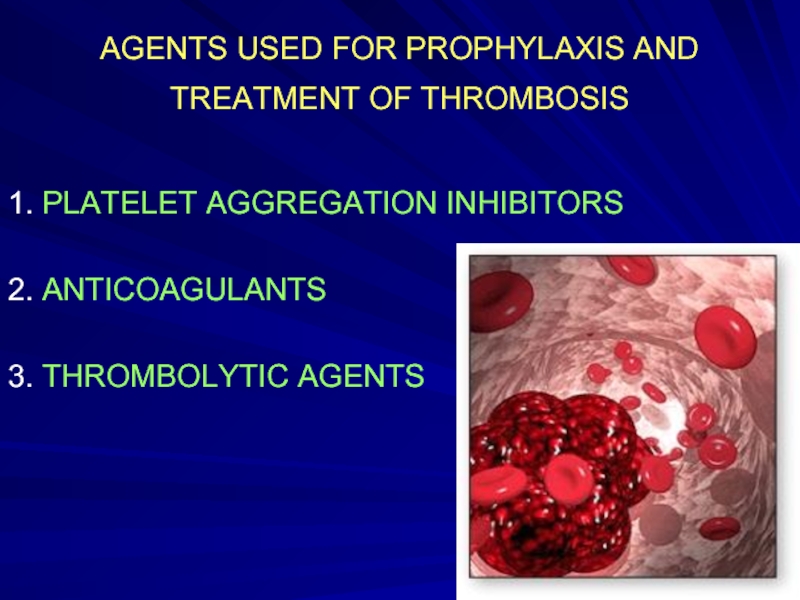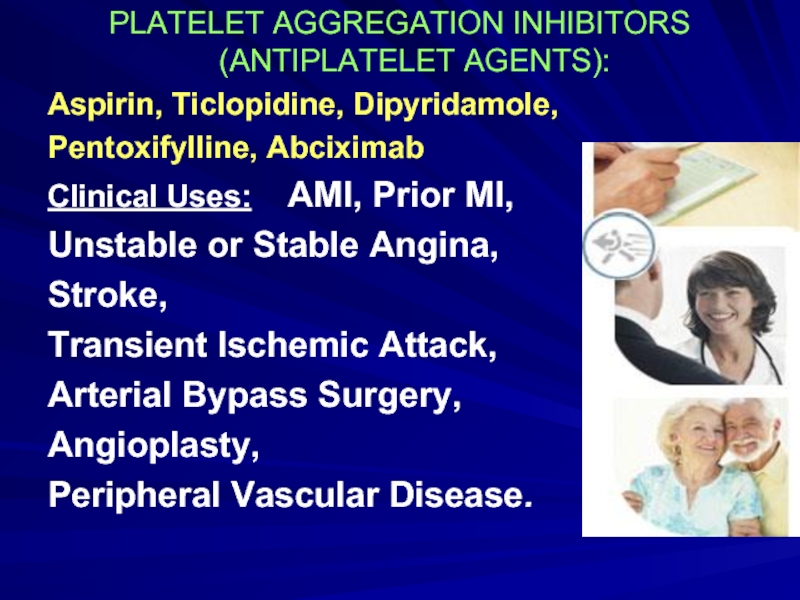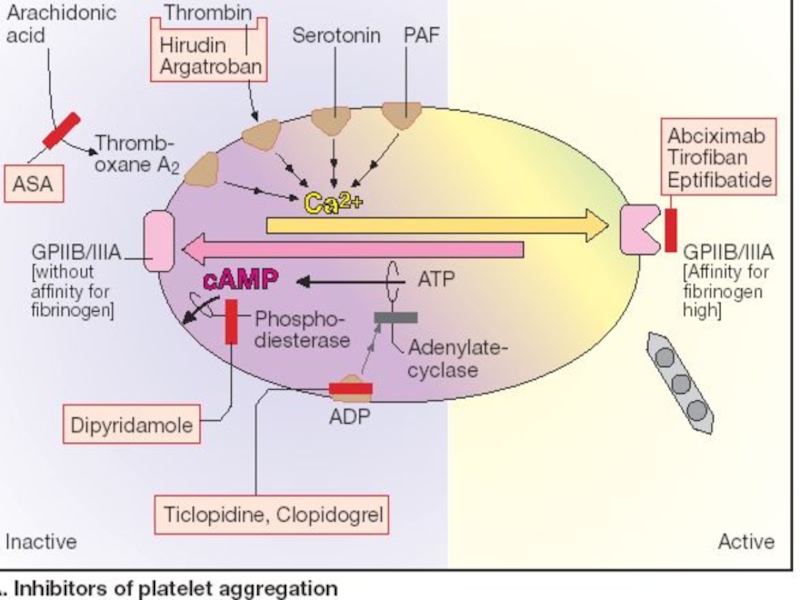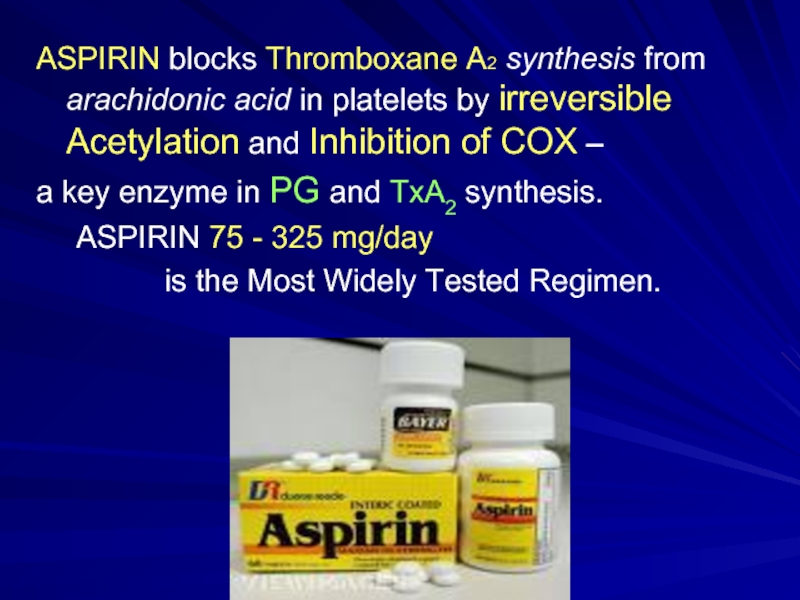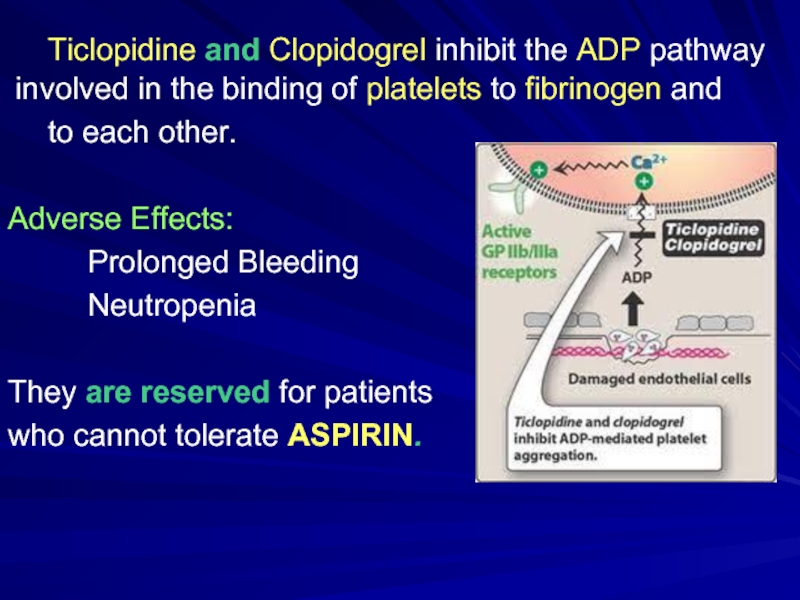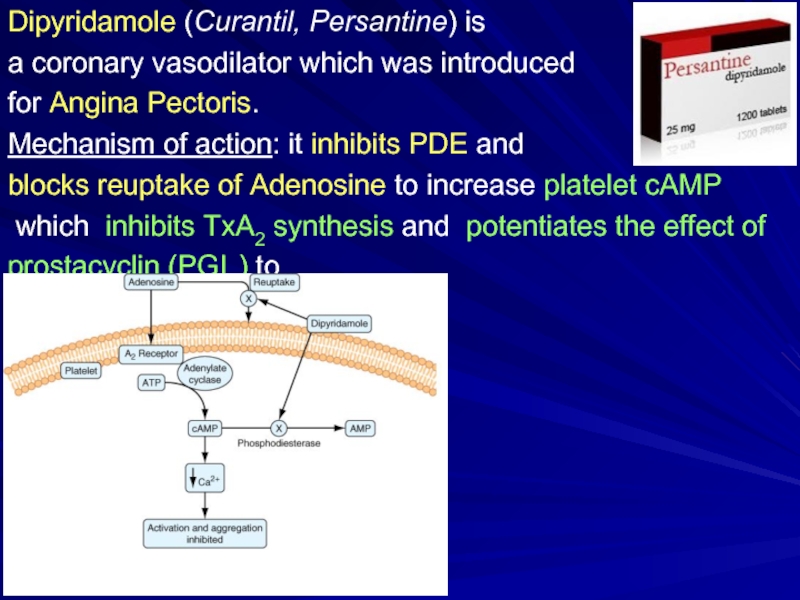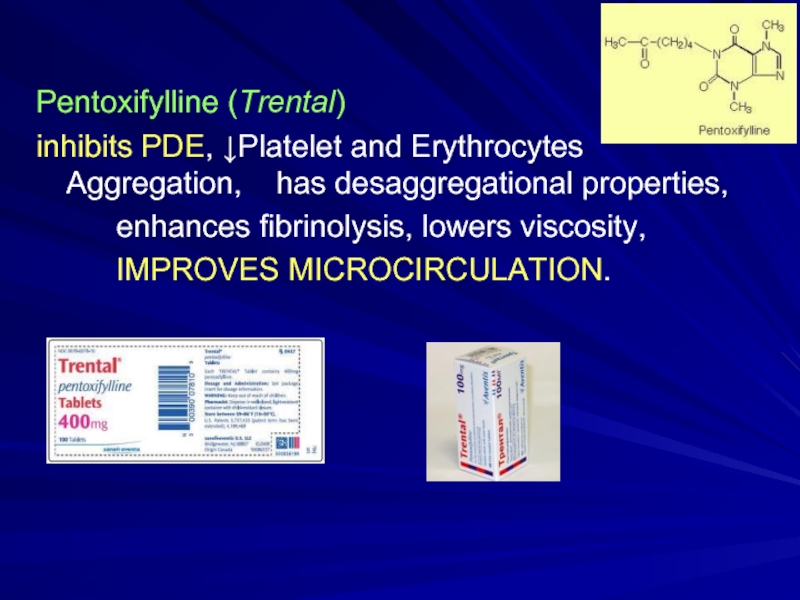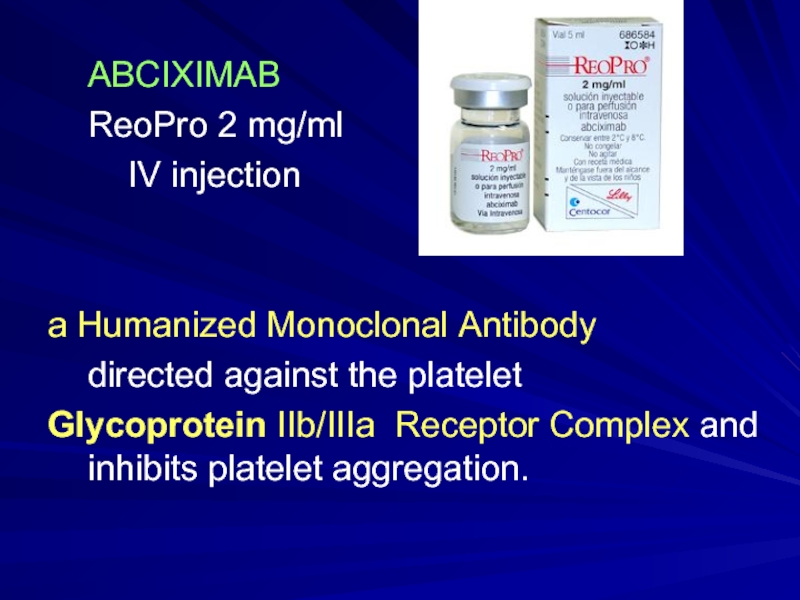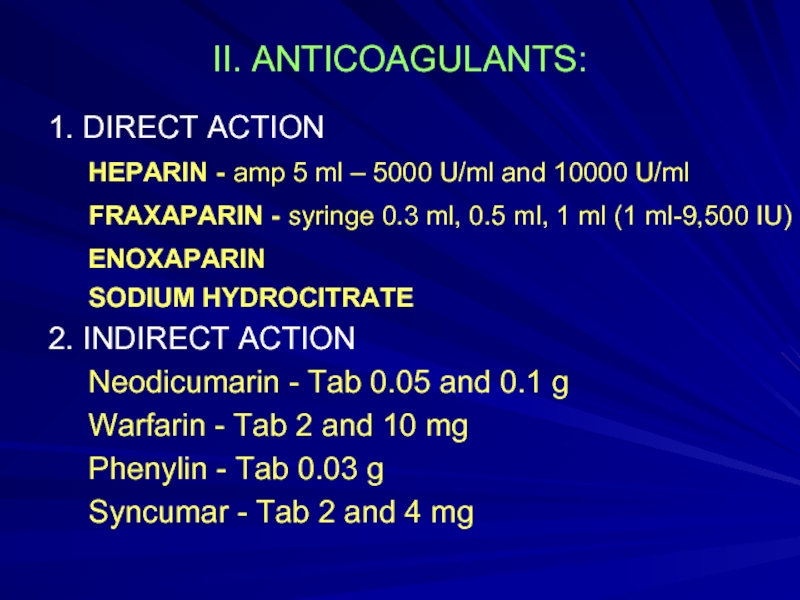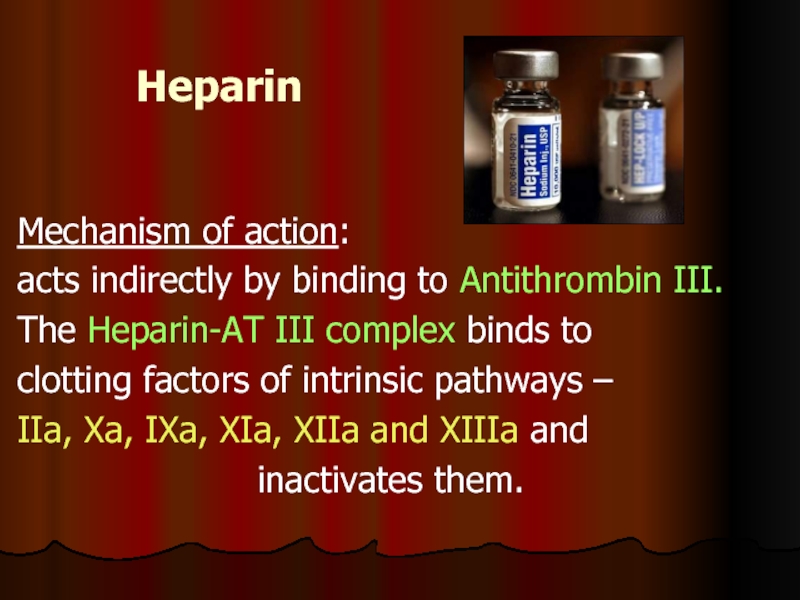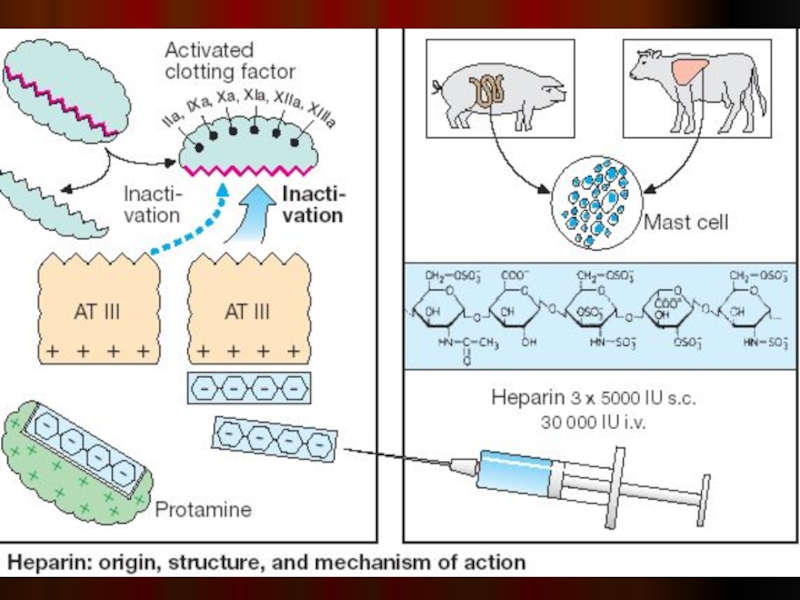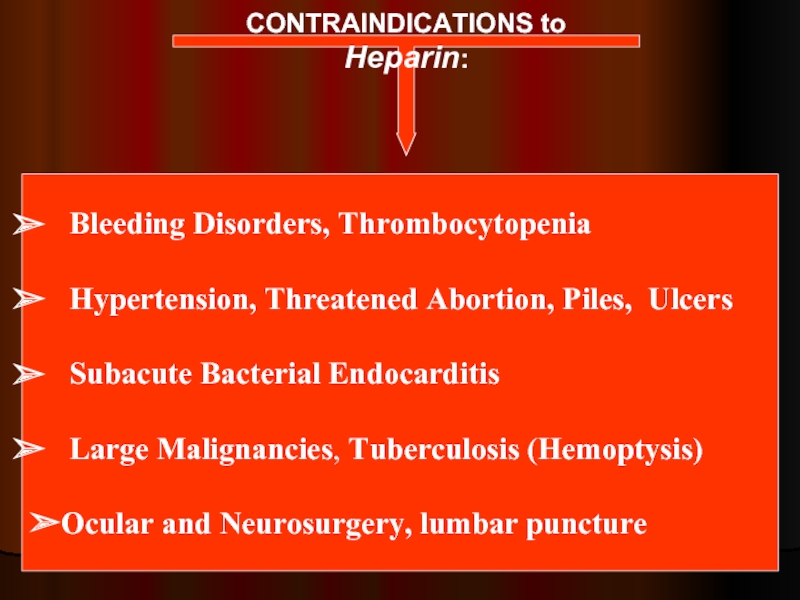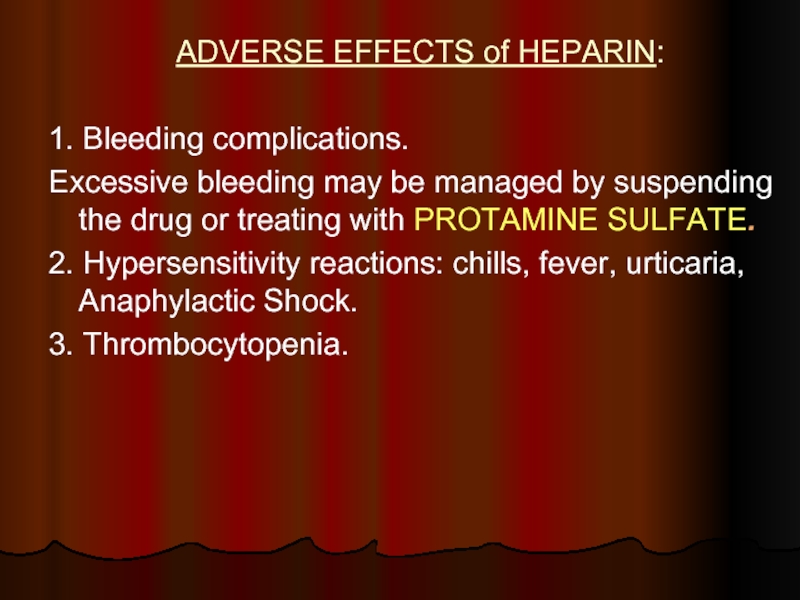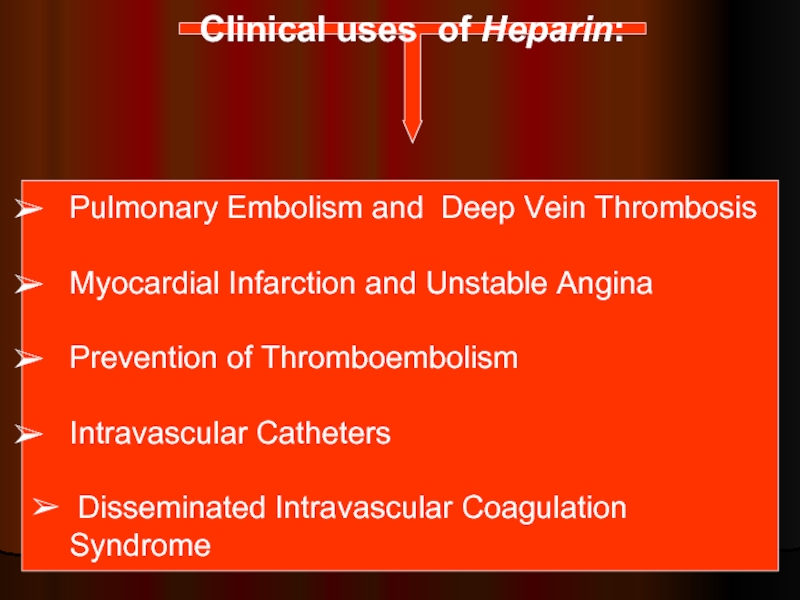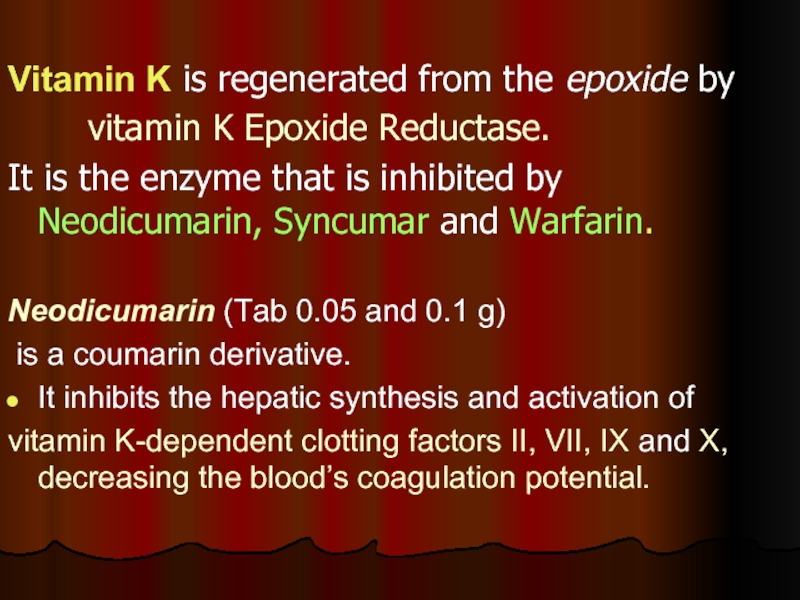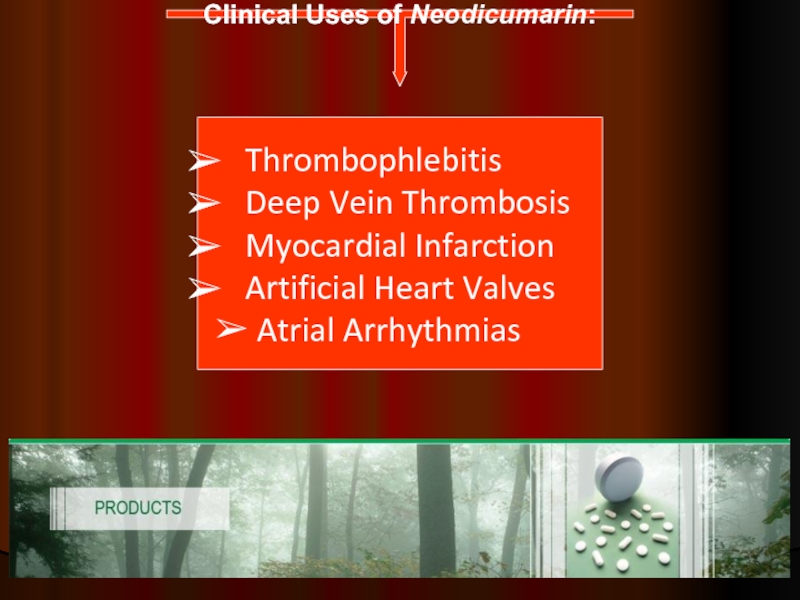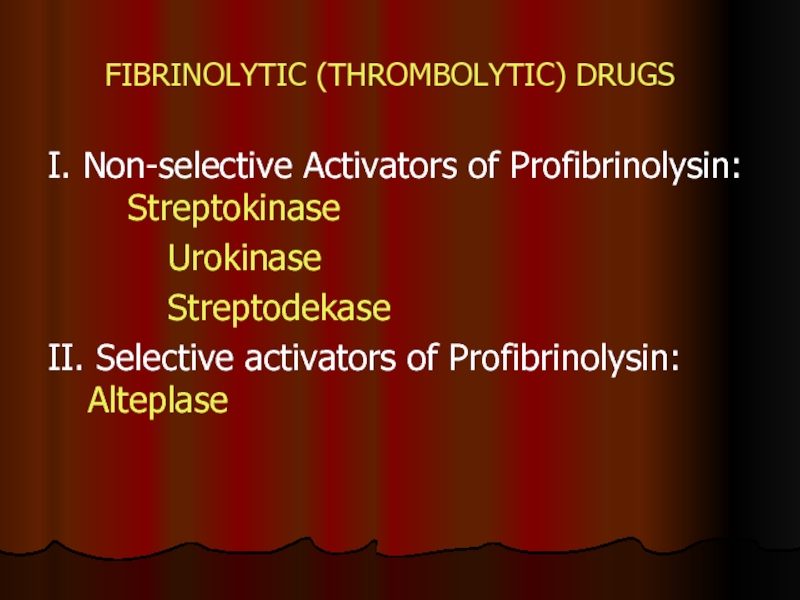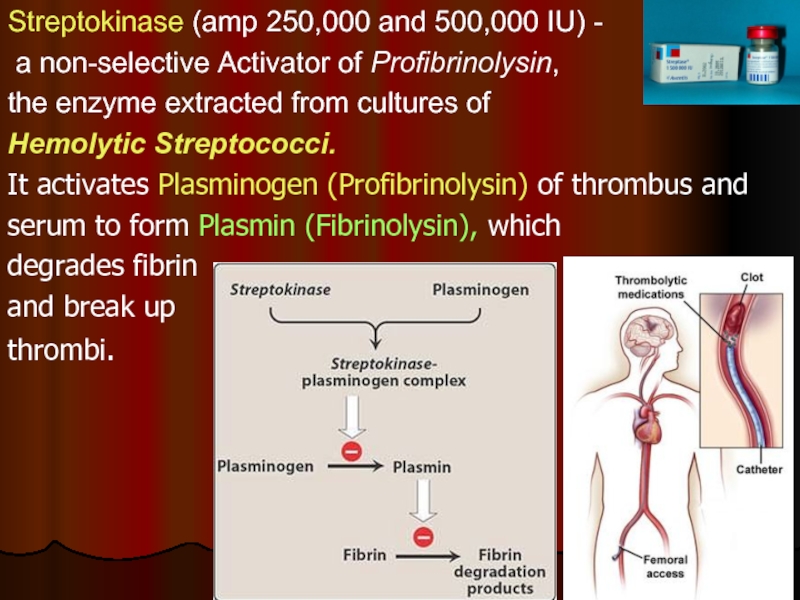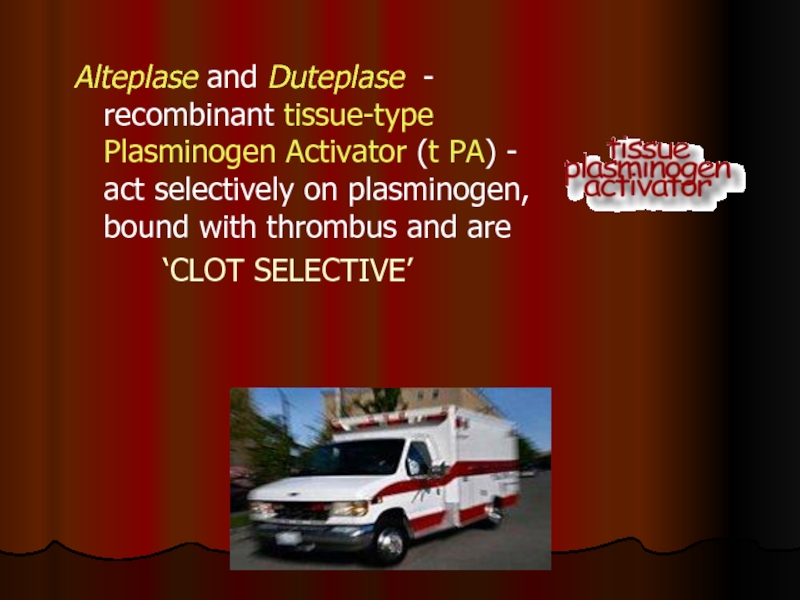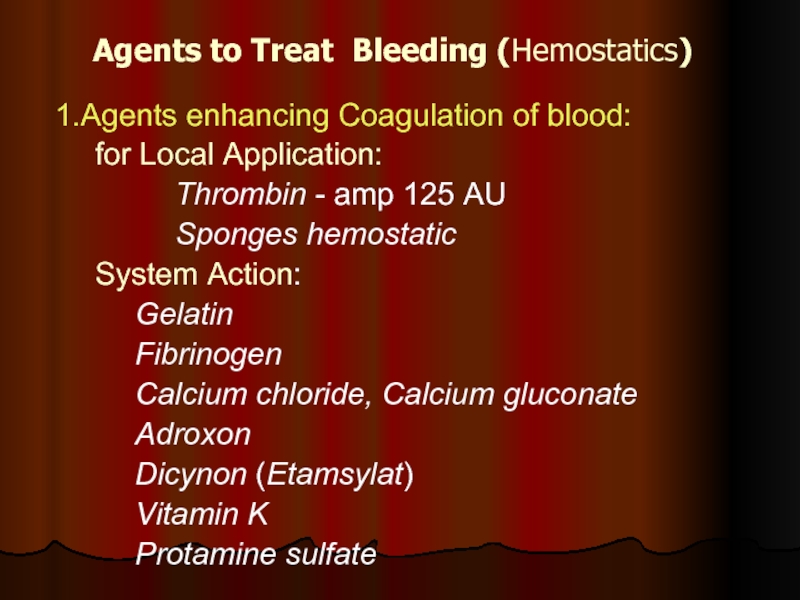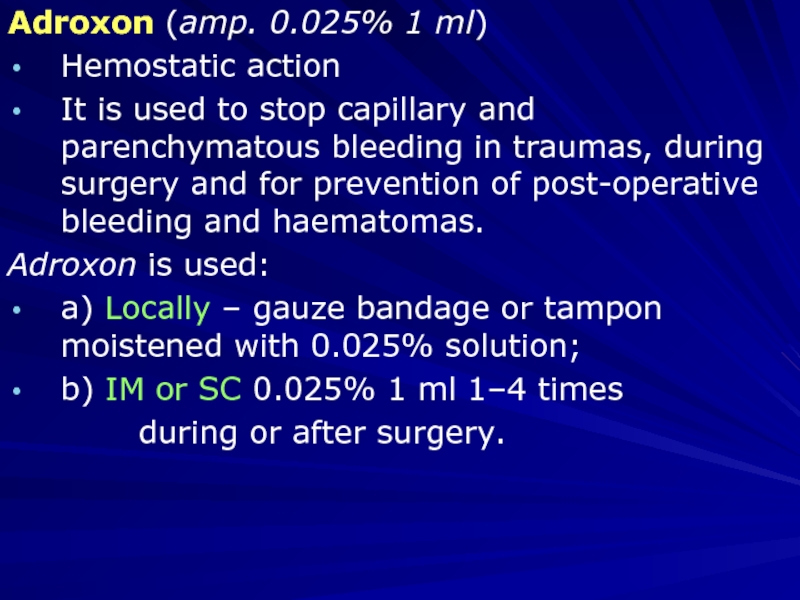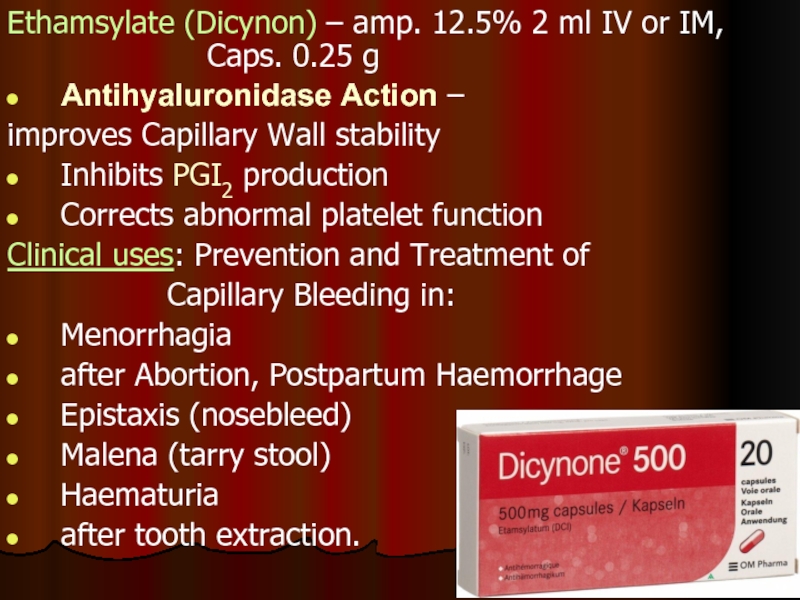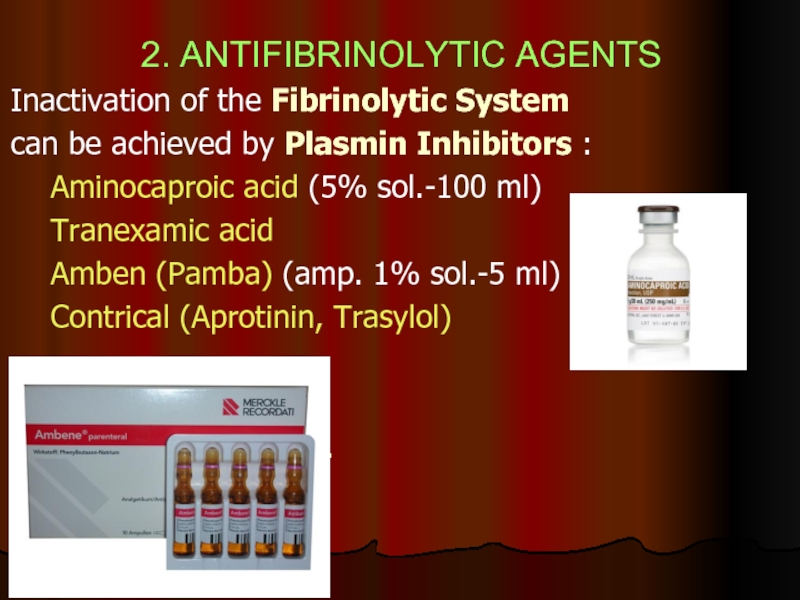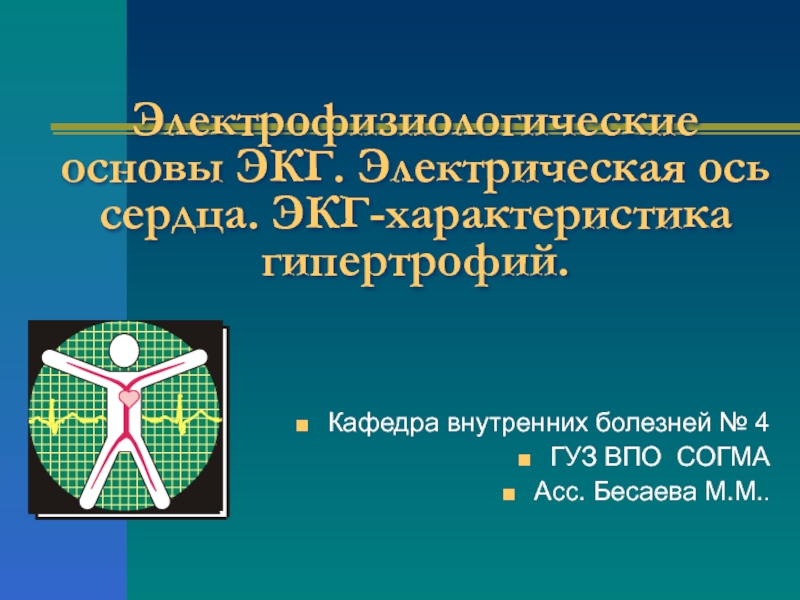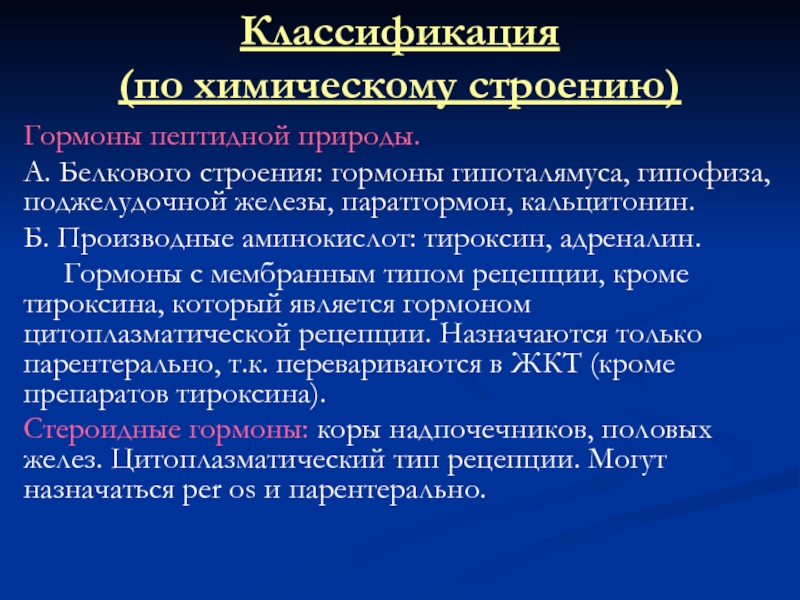- Главная
- Разное
- Дизайн
- Бизнес и предпринимательство
- Аналитика
- Образование
- Развлечения
- Красота и здоровье
- Финансы
- Государство
- Путешествия
- Спорт
- Недвижимость
- Армия
- Графика
- Культурология
- Еда и кулинария
- Лингвистика
- Английский язык
- Астрономия
- Алгебра
- Биология
- География
- Детские презентации
- Информатика
- История
- Литература
- Маркетинг
- Математика
- Медицина
- Менеджмент
- Музыка
- МХК
- Немецкий язык
- ОБЖ
- Обществознание
- Окружающий мир
- Педагогика
- Русский язык
- Технология
- Физика
- Философия
- Химия
- Шаблоны, картинки для презентаций
- Экология
- Экономика
- Юриспруденция
Drugs affecting blood презентация
Содержание
- 1. Drugs affecting blood
- 2. Principal Causes of a Disturbance of
- 4. Agents Affecting Erythropoesis I. Agents Stimulating Erythropoiesis
- 5. 2. In HYPERCHROMIC Anemias: Vitamin B12
- 6. Iron Agents: Ferrous Sulfate, Ferrous Lactate, Fercoven,
- 7. Fercoven (amp. 5 ml) contains 20 mg
- 9. OVERDOSE with Fe2+ COMPOUNDS Manifestation: lethargy,
- 10. HEMATOPOIETIC GROWTH FACTORS: ▶ ERYTHROPOETIN ▶ Granulocyte
- 11. Erythropoietin (Epoetin alfa) – vial 2000,
- 12. Filgrastim (G-CSF) is lineage-specific growth factor –
- 13. Molgramostim (GM-CSF) has broader actions than G-CSF.
- 14. Folate Deficiency: 1) Increased Demand (pregnancy and
- 15. The minimal requirement: ≈ 1 μg/day.
- 16. AGENTS AFFECTING LEUCOPOIESIS 1. Agents
- 17. AGENTS USED FOR PROPHYLAXIS AND TREATMENT OF
- 18. PLATELET AGGREGATION INHIBITORS (ANTIPLATELET AGENTS): Aspirin,
- 20. ASPIRIN blocks Thromboxane A2 synthesis from arachidonic
- 21. Ticlopidine and Clopidogrel inhibit the ADP pathway
- 22. Dipyridamole (Curantil, Persantine) is a coronary
- 23. Pentoxifylline (Trental) inhibits PDE, ↓Platelet and
- 24. ABCIXIMAB ReoPro 2 mg/ml IV
- 25. II. ANTICOAGULANTS: 1. DIRECT ACTION HEPARIN
- 26. Heparin Mechanism of action: acts
- 28. CONTRAINDICATIONS to Heparin: Bleeding Disorders, Thrombocytopenia
- 29. ADVERSE EFFECTS of HEPARIN: 1.
- 30. Clinical uses of Heparin: Pulmonary Embolism
- 31. Vitamin K is regenerated from the epoxide
- 32. Clinical Uses of Neodicumarin: Thrombophlebitis
- 33. FIBRINOLYTIC (THROMBOLYTIC) DRUGS I. Non-selective Activators of
- 34. Streptokinase (amp 250,000 and 500,000 IU) -
- 35. Alteplase and Duteplase - recombinant tissue-type Plasminogen
- 36. Agents to Treat Bleeding (Hemostatics) 1.Agents enhancing
- 37. Adroxon (amp. 0.025% 1 ml) Hemostatic
- 38. Ethamsylate (Dicynon) – amp. 12.5% 2 ml
- 39. 2. ANTIFIBRINOLYTIC AGENTS Inactivation of the Fibrinolytic
- 40. Thank You for Attention!
Слайд 1ZSMU Pharmacology Department
Lecture № 4
Drugs Affecting Blood
Lecturer – Assoc. Prof. Irene
Слайд 2 Principal Causes of
a Disturbance of Erythropoiesis :
1. Hemoglobin synthesis is
in Fe2+ deficiency –
Microcytic Hypochromic Anemia.
2. Cell multiplication is inhibited –
DNA synthesis is insufficient -
in deficiencies of Vitamin B12 or Folic Acid
- Macrocytic [Megalocytic]
Hyperchromic Anemia
Слайд 4Agents Affecting Erythropoesis
I. Agents Stimulating Erythropoiesis
1. Used in Hypochromic Anemias
a) Iron Agents:
Ferrous sulfate – caps. 0.25 g
Ferrous Lactate – pulv., PO 1 g
Fercoven – amp. 5 ml
Ferrum Lek - amp 5 ml
b) Cobalt agents:
Coamid – amp. 1%-1 ml
Fercoven
B. Hematopoietic Growth Factor:
Erythropoietin - vial 2000, 4000, 10,000 IU/mL
Слайд 52. In HYPERCHROMIC Anemias:
Vitamin B12 (Cyanocobalamin)
amp. 0.01%, 0.05%-1 ml
Folic Acid
II. AGENTS INHIBITING ERYTHROPOIESIS:
Sodium Phosphate liquor labelled Phosphor-32
Слайд 6Iron Agents:
Ferrous Sulfate, Ferrous Lactate, Fercoven, Ferrum Lek -
contain the
Uptake is efficient in the form of heme (present in hemo- and myoglobin).
Iron is stored in intestinal mucosal cells as ferritin
(an iron/protein complex) until needed by the body and passed on to the transport protein - transferrin,
a β1-glycoprotein.
The transferrin–iron complex undergoes endocytotic uptake mainly into erythroblasts to be utilized for Hb synthesis.
Слайд 7Fercoven (amp. 5 ml) contains 20 mg of Saccharate Iron and
It is introduced IM slowly (for 8–10 min) once a day
during 10–15 days; first 2 injections – 2 ml, then – 5 ml.
Ferrum Lek (5 ml containing 100 mg of Saccharate Iron) is administered IM or IV.
Interactions: Antacids inhibit iron absorption.
Adverse effects: GI disturbances (epigastric pain, diarrhea, constipation) caused by local irritation necessitates the intake of iron preparations with or after meals.
Adverse effects with IM injection are persistent pain
at the injection site and skin discoloration;
with IV injection: flushing, hypotension, anaphylactic shock.
Слайд 9OVERDOSE with Fe2+ COMPOUNDS
Manifestation: lethargy, nausea and vomiting green then
Treatment: support of airway, respiration, and circulation. Gastric lavage, using a 1% Sodium Bicarbonate solution, to convert iron to less irritating, poorly absorbed form.
Deferoxamine (powder for injection: 0.5 g) -chelates IRON by binding ferric ions to
the 3 hydroxamic groups of the molecule
[1 g IM].
Слайд 10HEMATOPOIETIC GROWTH FACTORS:
▶ ERYTHROPOETIN
▶ Granulocyte Colony-Stimulating Factor -
G-CSF, Filgrastim
▶ Granulocyte-Macrophage Colony-Stimulating
Слайд 11Erythropoietin (Epoetin alfa) – vial 2000, 4000, and 10,000 IU/ml IV,
Human erythropoietin, produced by
recombinant DNA technology
● Stimulates Erythroid Proliferation and Differentiation by interacting with Specific Erythropoietin Receptors
on red cell progenitors.
● Induces release of Reticulocytes from the bone marrow.
Clinical uses: anaemia caused by end-stage renal disease,
HIV-infection, and anaemia in some cancer patients.
Слайд 12Filgrastim (G-CSF) is lineage-specific growth factor –
● supports Proliferation, Differentiation and
Functional Activity of neutrophils causing a rapid rise in leucocytes within 2–3 days in patients with normal bone marrow function or 7–14 days in patients with bone marrow suppression.
Clinical uses: to decrease incidence of infection
● after cancer chemotherapy for non-myeloid malignancies,
● chronic severe neutropenia,
● after bone marrow transplantation in cancer patients;
● agranulocytosis, pancytopenia, acute leukaemia, myelodysplastic syndrome,
● hematologic toxicity with drug therapy.
Слайд 13Molgramostim (GM-CSF) has broader actions than G-CSF.
● stimulates Proliferation and Differentiation
● increases functional activity of mature neutrophils, enhancing phagocytosis.
GM-CSF acts together with IL-2 to stimulate T cell proliferation and appears to be a locally active factor
at the site of inflammation.
● mobilizes peripheral blood stem cells, but it is significantly less efficacious than G-CSF in this regard.
● enlarges the extent of expression of “respiratory explosion” (ensuring formation of 90% active forms of O2 and which is one of the most important mechanisms of phagocytosis).
Слайд 14Folate Deficiency:
1) Increased Demand (pregnancy and lactation)
2) Poor Absorption
caused by
the small intestine
3) Alcoholism
4) Treatment with drugs that are Dihydrofolate Reductase Inhibitors –
Methotrexate Trimethoprim
Biseptol
A primary result of folic acid deficiency is Megaloblastic Anemia
Слайд 16
AGENTS AFFECTING LEUCOPOIESIS
1. Agents Stimulating Leucopoiesis:
Sodium nucleinate
Pentoxyl
Methyluracil
Molgramostim
2. Agents Inhibiting leucopoiesis:
Cyclophosphamide
Dopan
Chlorambucil
Myelosan
Mercaptopurine
Methotrexate
Слайд 17AGENTS USED FOR PROPHYLAXIS AND TREATMENT OF THROMBOSIS
1. PLATELET AGGREGATION
2. ANTICOAGULANTS
3. THROMBOLYTIC AGENTS
Слайд 18PLATELET AGGREGATION INHIBITORS (ANTIPLATELET AGENTS):
Aspirin, Ticlopidine, Dipyridamole,
Pentoxifylline, Abciximab
Clinical Uses:
Unstable or Stable Angina,
Stroke,
Transient Ischemic Attack,
Arterial Bypass Surgery,
Angioplasty,
Peripheral Vascular Disease.
Слайд 20ASPIRIN blocks Thromboxane A2 synthesis from arachidonic acid in platelets by
a key enzyme in PG and TxA2 synthesis.
ASPIRIN 75 - 325 mg/day
is the Most Widely Tested Regimen.
Слайд 21 Ticlopidine and Clopidogrel inhibit the ADP pathway involved in the binding
to each other.
Adverse Effects:
Prolonged Bleeding
Neutropenia
They are reserved for patients
who cannot tolerate ASPIRIN.
Слайд 22Dipyridamole (Curantil, Persantine) is
a coronary vasodilator which was introduced
for
Mechanism of action: it inhibits PDE and
blocks reuptake of Adenosine to increase platelet cAMP
which inhibits TxA2 synthesis and potentiates the effect of
prostacyclin (PGI2) to
antagonize Platelet
Stickiness and
↓Platelet Adhesion to
Thrombogenic
Surface.
Слайд 23Pentoxifylline (Trental)
inhibits PDE, ↓Platelet and Erythrocytes Aggregation, has desaggregational properties,
enhances fibrinolysis, lowers viscosity,
IMPROVES MICROCIRCULATION.
Слайд 24
ABCIXIMAB
ReoPro 2 mg/ml
IV injection
a Humanized Monoclonal Antibody
directed against
Glycoprotein IIb/IIIa Receptor Complex and inhibits platelet aggregation.
Слайд 25II. ANTICOAGULANTS:
1. DIRECT ACTION
HEPARIN - amp 5 ml – 5000
FRAXAPARIN - syringe 0.3 ml, 0.5 ml, 1 ml (1 ml-9,500 IU)
ENOXAPARIN
SODIUM HYDROCITRATE
2. INDIRECT ACTION
Neodicumarin - Tab 0.05 and 0.1 g
Warfarin - Tab 2 and 10 mg
Phenylin - Tab 0.03 g
Syncumar - Tab 2 and 4 mg
Слайд 26Heparin
Mechanism of action:
acts indirectly by binding to Antithrombin III.
The
clotting factors of intrinsic pathways –
IIa, Xa, IXa, XIa, XIIa and XIIIa and
inactivates them.
Слайд 28CONTRAINDICATIONS to Heparin:
Bleeding Disorders, Thrombocytopenia
Hypertension, Threatened Abortion, Piles, Ulcers
Subacute Bacterial Endocarditis
Large Malignancies, Tuberculosis (Hemoptysis)
➢Ocular and Neurosurgery, lumbar puncture
Слайд 29ADVERSE EFFECTS of HEPARIN:
1. Bleeding complications.
Excessive bleeding may be
2. Hypersensitivity reactions: chills, fever, urticaria, Anaphylactic Shock.
3. Thrombocytopenia.
Слайд 30Clinical uses of Heparin:
Pulmonary Embolism and Deep Vein Thrombosis
Myocardial Infarction and Unstable Angina
Prevention of Thromboembolism
Intravascular Catheters
➢ Disseminated Intravascular Coagulation Syndrome
Слайд 31Vitamin K is regenerated from the epoxide by
vitamin K Epoxide
It is the enzyme that is inhibited by Neodicumarin, Syncumar and Warfarin.
Neodicumarin (Tab 0.05 and 0.1 g)
is a coumarin derivative.
It inhibits the hepatic synthesis and activation of
vitamin K-dependent clotting factors II, VII, IX and X, decreasing the blood’s coagulation potential.
Слайд 32Clinical Uses of Neodicumarin:
Thrombophlebitis
Deep Vein Thrombosis
Myocardial Infarction
Artificial
➢ Atrial Arrhythmias
Слайд 33FIBRINOLYTIC (THROMBOLYTIC) DRUGS
I. Non-selective Activators of Profibrinolysin: Streptokinase
Urokinase
Streptodekase
II. Selective activators of
Слайд 34Streptokinase (amp 250,000 and 500,000 IU) -
a non-selective Activator of
the enzyme extracted from cultures of
Hemolytic Streptococci.
It activates Plasminogen (Profibrinolysin) of thrombus and
serum to form Plasmin (Fibrinolysin), which
degrades fibrin
and break up
thrombi.
Слайд 35Alteplase and Duteplase - recombinant tissue-type Plasminogen Activator (t PA) -
‘CLOT SELECTIVE’
Слайд 36Agents to Treat Bleeding (Hemostatics)
1.Agents enhancing Coagulation of blood:
for Local Application:
Thrombin - amp 125 AU
Sponges hemostatic
System Action:
Gelatin
Fibrinogen
Calcium chloride, Calcium gluconate
Adroxon
Dicynon (Etamsylat)
Vitamin K
Protamine sulfate
Слайд 37Adroxon (amp. 0.025% 1 ml)
Hemostatic action
It is used to
Adroxon is used:
a) Locally – gauze bandage or tampon moistened with 0.025% solution;
b) IM or SC 0.025% 1 ml 1–4 times
during or after surgery.
Слайд 38Ethamsylate (Dicynon) – amp. 12.5% 2 ml IV or IM, Caps.
Antihyaluronidase Action –
improves Capillary Wall stability
Inhibits PGI2 production
Corrects abnormal platelet function
Clinical uses: Prevention and Treatment of
Capillary Bleeding in:
Menorrhagia
after Abortion, Postpartum Haemorrhage
Epistaxis (nosebleed)
Malena (tarry stool)
Haematuria
after tooth extraction.
Слайд 392. ANTIFIBRINOLYTIC AGENTS
Inactivation of the Fibrinolytic System
can be achieved by
Aminocaproic acid (5% sol.-100 ml)
Tranexamic acid
Amben (Pamba) (amp. 1% sol.-5 ml)
Contrical (Aprotinin, Trasylol)
All agents inhibit
plasminogen activation.
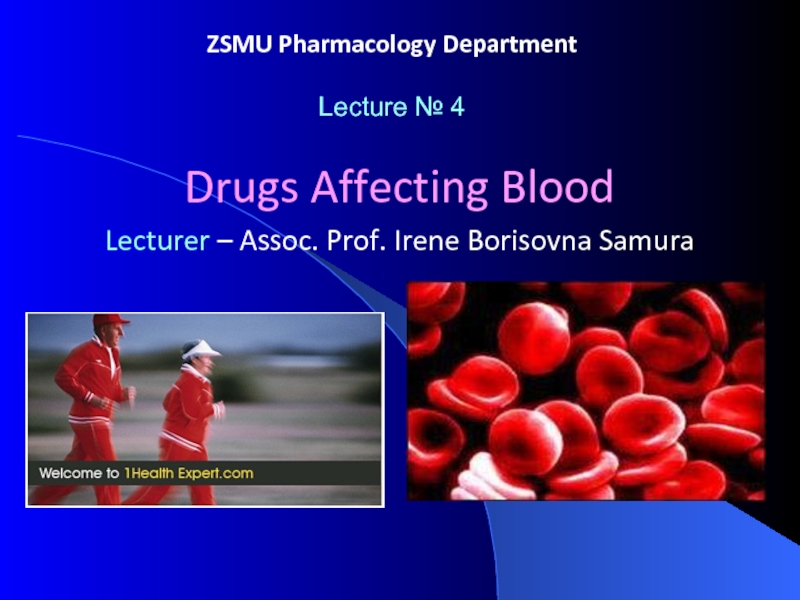
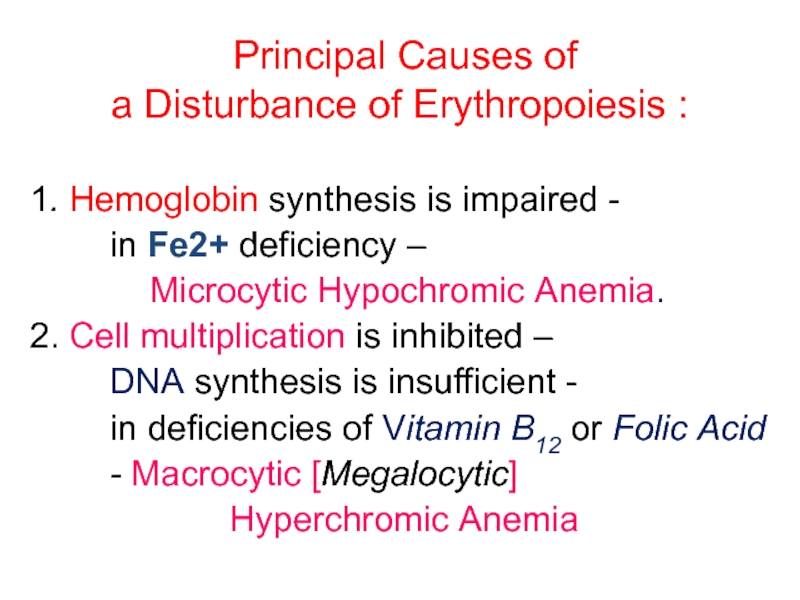
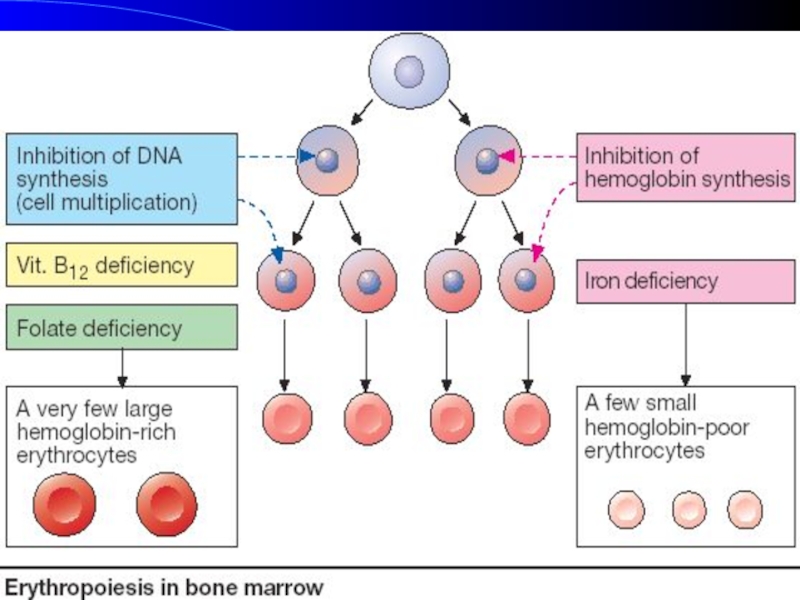
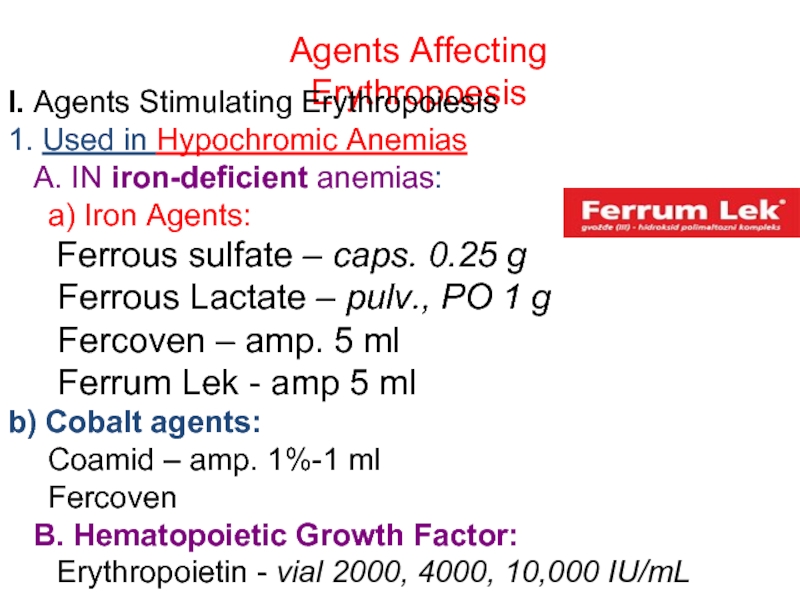
![2. In HYPERCHROMIC Anemias: Vitamin B12 (Cyanocobalamin) amp. 0.01%, 0.05%-1 ml Folic Acid [Vit Bc, B9] –](/img/tmb/2/149246/3e616f11b1c9723149f0961fa329eff9-800x.jpg)
